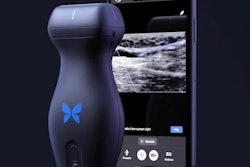Dear Ultrasound Insider,
The Ultrasound Community is filled with content highlighting ultrasound's strength and versatility for COVID-19 imaging, and this Insider edition's featured story is no exception.
In a new study, researchers used ultrasound to track the prevalence of deep vein thrombosis in patients treated with mechanical ventilation for COVID-19. Consistent sonography helped the team identify the benefit of twice-daily prophylactic anticoagulation medication. Read more in the Insider Exclusive.
Clinicians are also using ultrasound as a follow-up imaging tool in patients who have recovered from COVID-19 infection but still have lingering symptoms, a group sometimes known as "long-haulers."
One new study documented lung abnormalities in three such patients who had mild cases of COVID-19 but lingering shortness of breath. The three patients, who ranged in age from mid-30s to mid-60s, had a variety of notable ultrasound findings, including irregular pleural lines and multiple B-lines.
Those findings were corroborated by a second study published just days later evaluating patients who had been discharged from the intensive care unit for severe COVID-19 treatment. Months after discharge, nearly half of the patients remained symptomatic, and some were unable to complete a six-minute walk test. Follow-up ultrasound scans showed many patients still had B-line-like artifacts and pleural line irregularities.
These new studies reinforce the importance of follow-up imaging in patients who have recovered from COVID-19. They are just a sampling of COVID-19 stories in the Ultrasound Community, which covers everything from air disinfection to using ultrasound to pinpoint patients missed by tests.
In other Ultrasound Community news, prenatal ultrasound imaging detected a rare oropharyngeal teratoma (OPT) protruding from the oral cavity of a fetus. Fetal oropharyngeal tumors, which can obstruct breathing, only occur in 1 in 35,000 to 200,000 live births, according to the authors.
The OPT story isn't the only one featuring prenatal ultrasound on AuntMinnie.com. A recent systematic review of 112,000 pregnancies questioned the benefits of using third-trimester ultrasound scans to predict large infant size. Ultrasound size estimates failed to reliably predict shoulder dystocia, one of the most common complications of delivering large newborns.
With Thanksgiving right around the corner, I want to end with a simple thank you. I'm so grateful for the global research and medical community that has banded together on an unprecedented scale to study, treat, and soon vaccinate against a strange, deadly disease that we did not know about this time last year. Your tireless work has made 2020 a little brighter.



















